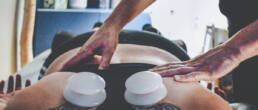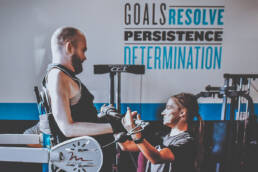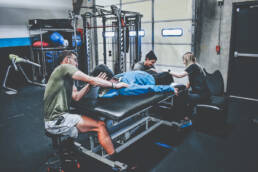Secondary Health Conditions
Physical, medical, cognitive, emotional, or psychosocial consequences to which persons with disabilities are more susceptible by virtue of an underlying condition, including adverse outcomes in health, wellness, participation, and quality of life.
There are several secondary health complications that can be deadly for individuals living with paralysis.
1. Pressure Ulcers
Pressure ulcers, also known as bedsores, are a common complication for people with paralysis. These wounds develop when pressure is applied to an area of the body for an extended period, such as when sitting or lying down for long periods of time. Pressure ulcers can be difficult to heal and can become infected, leading to sepsis, a potentially life-threatening condition.
2. Respiratory Complications
Paralysis can affect the muscles involved in breathing, making it difficult to breathe properly. Respiratory complications can include pneumonia, collapsed lungs, and respiratory failure, which can be life-threatening.
3. Cardiovascular Disease
Paralysis can increase the risk of developing cardiovascular disease, including heart attack and stroke. This is due to factors such as reduced physical activity and increased levels of inflammation.
4. Deep vein Thrombosis
DVT is a condition in which blood clots form in the deep veins of the body, most commonly in the legs. Individuals with paralysis are at increased risk of developing DVT due to reduced mobility and blood flow.
5. Autonomic Dysreflexia
Autonomic dysreflexia is a potentially life-threatening condition that can occur in individuals with spinal cord injuries at or above the level of T6. It is characterized by a sudden increase in blood pressure, which can cause symptoms such as headaches, nausea, and sweating. If left untreated, autonomic dysreflexia can lead to seizures, strokes, and even death.
These are just a few examples of the most deadly secondary health complications for individuals living with paralysis. It’s important for individuals with paralysis to work closely with their healthcare providers to manage these complications and reduce their risk of developing life-threatening conditions.
Take the Next Step Toward Recovery
Whether you’re just beginning your journey or looking for new ways to push forward, NeuAbility is here to help. Contact us today or explore our programs to see how we can support your path to greater independence, strength, and community.
Like this article? Spread the word!
Related Posts
May 9, 2025
Activity-Based Therapy for Paralysis: Building Strength, Independence, and Community
Learn how activity-based therapy (ABT) helps individuals with paralysis improve motor…
May 9, 2025
Physiological Barriers to Spinal Cord Injury Recovery: Challenges and Research Directions
Explore the physiological barriers that impact spinal cord injury recovery, including…
May 9, 2025
6 Powerful Ways to Boost Neuroplasticity for Brain Recovery and Function
Explore six proven ways to enhance neuroplasticity—including exercise, brain stimulation,…





